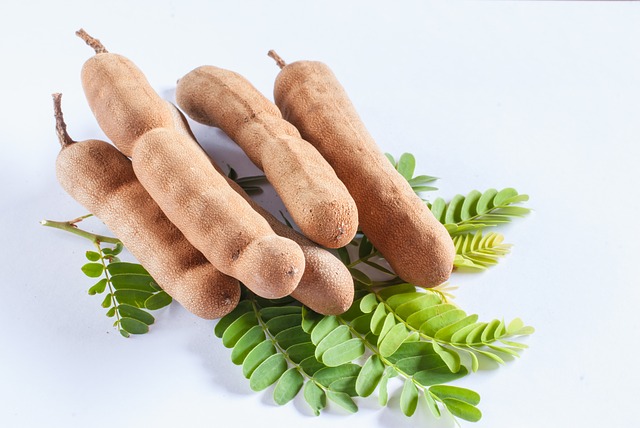Exercise Daily – In the world of sports and athletics, where every ounce of energy counts, athletes constantly search for natural ways to enhance their performance. While many supplements and energy drinks are on the market, a natural secret has been cherished for centuries – Tamarind. In this article, we’ll delve into the incredible benefits of tamarind for athletes. From a digestion aid to an energy booster, tamarind is your ultimate ally in pursuing athletic excellence.
Tamarind
Tamarind, often called the “date of India,” is a tropical fruit with a unique blend of sweet and tangy flavors. But there’s more to tamarind than its delightful taste; it’s a nutritional powerhouse cherished for centuries in various culinary traditions and for its potential health benefits.
1. What is Tamarind?
Tamarind is the fruit of the Tamarindus indica tree, native to Africa but widely cultivated in tropical regions across Asia, South America, and beyond. The fruit is characterized by its brown pod-like shell, encasing a pulp that contains seeds. It’s this pulp that holds the magic of tamarind.
2. Nutritional Value
Tamarind isn’t just a flavorful addition to dishes; it also brings a wealth of essential nutrients. Let’s take a look at what makes tamarind a nutritional gem.
i. Vitamins and Minerals
Tamarind is a good source of essential vitamins such as vitamin C, vitamin A, and several of the B vitamins. These vitamins play a crucial role in maintaining overall health and well-being.
ii. Fiber
One standout feature of tamarind is its high dietary fiber content. So, fiber is essential for a healthy digestive system, and tamarind’s natural fiber content can aid in regular bowel movements and prevent constipation.
iii. Antioxidants
Tamarind is packed with antioxidants, including flavonoids, polyphenols, and carotenoids. Consequently, these antioxidants play a crucial role in helping protect the body from the damaging effects of free radicals. As a result, they can significantly reduce the risk of chronic diseases.
3. Culinary Uses
Tamarind’s versatility extends beyond its nutritional value. It’s a staple in many cuisines and is used in various forms:
i. Tamarind Paste
Tamarind paste is a concentrated form of tamarind pulp and is used to add a tangy flavor to dishes, sauces, and chutneys.
ii. Tamarind Juice
Tamarind juice is a refreshing beverage that’s popular in many tropical countries. It’s not only tasty but also a source of vitamins and minerals.
iii. Tamarind in Soups and Stews
In many Asian and African cuisines, tamarind is used to lend a unique tartness to soups, stews, and curries.
4. Traditional Medicine
Beyond its culinary uses, tamarind has a history of use in traditional medicine. It’s believed to have various health benefits, including:
i. Digestive Aid
Tamarind has been used for centuries to alleviate digestive issues such as indigestion and bloating. Its high fiber content is thought to promote healthy digestion.
ii. Anti-Inflammatory Properties
Tamarind contains compounds that have anti-inflammatory properties, making it potentially beneficial for conditions related to inflammation.

Tamarind Remedies for Common Ailments
The Tamarind is a tropical fruit that is native to Africa and Asia. It has a sweet and sour taste and is often used in culinary dishes. Tamarind is also a popular ingredient in traditional medicine. It is known for its anti-inflammatory, antioxidant, and antibacterial properties.
Digestive problems
- Constipation: Mix 1 teaspoon of tamarind paste with a glass of water and drink it daily to relieve constipation.
- Indigestion: Chew on a small piece of dried tamarind after a meal to relieve indigestion.
- Diarrhea: Mix 1 teaspoon of tamarind paste with a glass of yogurt and drink it to relieve diarrhea.
- Stomach ulcers: To soothe stomach ulcers, drink a glass of tamarind juice twice a day.
Respiratory problems
- Common cold: To relieve the common cold symptoms, drink a glass of warm tamarind juice with a pinch of black pepper.
- Cough: To soothe a sore throat and relieve a cough, mix one teaspoon of tamarind paste with a little bit of honey and consume it.
- Asthma: To reduce inflammation and improve breathing in people with asthma, mix 1 teaspoon of tamarind paste with a little bit of ginger juice and consume it.
Skin problems
- Acne: To treat acne, apply tamarind pulp and turmeric powder paste to the affected areas. Leave it on for 15 minutes and wash it off with cold water.
- Eczema: Soothe eczema-prone skin, soak in a bath with a handful of tamarind leaves.
- Psoriasis: To reduce inflammation and itching in people with psoriasis, apply tamarind pulp and aloe vera gel to the affected areas. Leave it on for 30 minutes and wash it off with cold water.
Other ailments
Fever: Drink tamarind juice mixed with a pinch of turmeric powder to reduce fever.
Malaria: Tamarind leaves are effective in treating malaria. To make a tea, boil a handful of tamarind leaves in water for 10 minutes. Strain the tea and drink it twice a day.
Headache: To relieve a headache, apply a paste of tamarind pulp to the forehead and temples. Leave it on for 30 minutes and wash it off with cold water.
Menstrual cramps: Drink a glass of warm tamarind juice with a pinch of black pepper to relieve menstrual cramps.

Tamarind Recipe for Common Ailments
Here is a recipe for a simple tamarind remedy that can be used to treat a variety of common ailments, such as constipation, indigestion, and the common cold:
Ingredients:
- 1 tablespoon tamarind pulp
- 1 cup water
- Honey or lemon juice to taste (optional)
Instructions:
- Soak the tamarind pulp in water for a few hours until it is softened.
- Mash the tamarind pulp with a spoon to release the juices.
- Strain the mixture through a fine-mesh sieve.
- Add honey or lemon juice to taste (optional).
- Drink the tamarind juice immediately.
To use the tamarind remedy for constipation:
Drink 1 cup of tamarind juice in the morning on an empty stomach.
To use the tamarind remedy for indigestion:
Drink 1 cup of tamarind juice after a meal.
To use the tamarind remedy for the common cold:
Drink 1 cup of warm tamarind juice with a pinch of black pepper twice a day.
Storage:
Tamarind juice can be stored in the refrigerator for up to 3 days.
Health Benefits of Tamarind
Tamarind has some potential health benefits, including:
1. Rich in Antioxidants
With its natural tangy goodness, Tamarind is a reliable source of antioxidants. These antioxidants are crucial in shielding the body against potential damage caused by those notorious troublemakers known as free radicals. However, free radicals, those unstable molecules, are infamous for wreaking havoc on our cells and have been linked to the development of chronic diseases like cancer and heart disease. Therefore, incorporating tamarind into your diet can be a tasty and nutritious way to bolster your body’s defenses against these health threats.
2. May Have Anticancer Properties
Some studies have shown that tamarind may have anticancer properties. For example, one study found that tamarind extract could kill cancer cells in the laboratory. However, more research is needed to confirm these findings.
3. May Improve Heart Health and Cholesterol
Tamarind may help to improve heart health by lowering cholesterol levels. One study found tamarind extract could lower LDL (bad) cholesterol and raise HDL (good) cholesterol levels in rats.
4. Offers Liver Protective Benefits
Tamarind may help to protect the liver from damage. One study found that tamarind extract was able to reduce liver damage caused by alcohol in rats.
5. Provides Natural Antimicrobial Benefits
Tamarind contains compounds that have antimicrobial properties. This means it may help kill bacteria, viruses, and fungi. For example, one study found tamarind extract could kill the bacteria that cause Salmonella and Escherichia coli (E. coli) food poisoning.
6. May Offer Anti-Diabetic Effects
Some studies have shown that tamarind may have anti-diabetic effects. For example, one study found that tamarind extract could lower blood sugar levels in rats with diabetes. However, more research is needed to confirm these findings.
7. May Aid in Weight Loss
Tamarind may help in weight loss by increasing metabolism and reducing appetite. One study found that tamarind extract could increase metabolism and reduce appetite in rats. However, more research is needed to confirm these findings in humans.
8. Boosts the Immune System
Tamarind is a good source of vitamin C, which is an important nutrient for the immune system. Vitamin C helps to produce white blood cells, which fight infection.
9. Improves Digestive Health
Tamarind is a good source of dietary fiber, which is important for digestive health. Dietary fiber helps to keep the digestive system healthy and regular.
10. Relieves Constipation
Tamarind is a natural laxative, which means that it can help to relieve constipation. The laxative effects of tamarind are due to its high fiber content and its ability to stimulate the digestive system.
11. Promotes Healthy Skin and Hair
Tamarind is a good source of vitamins and minerals that are important for healthy skin and hair. For example, tamarind is a good source of vitamin C, which helps to produce collagen, a protein that is essential for healthy skin. Tamarind is also a good source of iron, which helps to prevent hair loss.

Tamarind’s Role in Digestion
Digestion is a fundamental aspect of our overall well-being and tamarind, the tropical wonder fruit, significantly promotes digestive health.
1. Fiber Content
Tamarind’s high fiber content is a key element that elevates it to the status of a digestive superhero. Fiber, an essential component, plays a pivotal role in ensuring regular bowel movements and preventing the discomfort of constipation. Additionally, the dietary fiber in tamarind works diligently to facilitate smooth digestion, enhancing your body’s ability to process food efficiently. This simple addition to your diet can significantly affect your digestive health.
2. Natural Laxative
Tamarind contains natural compounds that act as gentle laxatives. These compounds can help ease bowel movements, preventing the discomfort of constipation. Unlike synthetic laxatives, tamarind’s effects are gentle and don’t lead to dependency.
3. Reducing Bloating
Bloating can be a common and uncomfortable digestive issue. Tamarind’s natural enzymes can help reduce gas and bloating, making you feel more comfortable after meals.
Combatting Inflammation
Inflammation in the digestive tract can lead to various discomforts. Fortunately, tamarind comes to the rescue. This tangy fruit is packed with antioxidants and anti-inflammatory compounds. As a result, it holds the potential to provide relief by soothing inflammation in the stomach and intestines.
1. Antioxidants
Tamarind is rich in antioxidants like vitamin C, which can neutralize harmful free radicals in the digestive system. By reducing oxidative stress, tamarind contributes to a healthier gut environment.
2. Anti-Inflammatory Properties
Certain compounds in tamarind, such as polyphenols and flavonoids, have anti-inflammatory properties. Additionally, these compounds may help reduce inflammation in the digestive tract, potentially alleviating symptoms of conditions like irritable bowel syndrome (IBS).
Tamarind in Traditional Medicine
Tamarind’s digestive benefits are not a recent discovery. Traditional medicine systems in various cultures have long used tamarind to address digestive discomforts.
1. Ayurveda
In Ayurvedic medicine, tamarind is believed to balance the digestive system’s “Pitta” dosha. It’s recommended for those experiencing acidity and indigestion.
2. Traditional Asian Remedies
In many Asian countries, tamarind is used in traditional remedies for digestive issues. Tamarind tea or tinctures are often prepared to ease stomach discomfort.
Tamarind: A Natural Energy Booster
Regarding sustaining energy levels, athletes and active individuals constantly seek natural solutions that won’t cause energy crashes or side effects. Enter tamarind, the tropical fruit with a tangy twist, which has a remarkable role as a natural energy booster.
1. Boosting Metabolism
Metabolism is the body’s engine for converting food into energy. A faster metabolism means more efficient energy production. Here’s how tamarind contributes to this process:
i. Vitamin B Complex
Tamarind contains several B vitamins, including B1 (thiamine), B2 (riboflavin), B3 (niacin), and B6 (pyridoxine). These vitamins are essential for energy metabolism. Additionally, they help convert carbohydrates, proteins, and fats into usable energy, allowing you to stay active and alert.
ii. Iron Content
Iron is a vital mineral that plays a key role in producing hemoglobin, a protein in red blood cells that transports oxygen throughout the body. When your body receives an ample supply of oxygen, it can perform at its best. Tamarind contains iron, making it a valuable addition to an athlete’s diet.
iii. Sustained Energy Release
Unlike the quick energy spikes followed by crashes from sugary energy drinks or snacks, tamarind provides a sustained release of energy. Its nutrients are released slowly into the bloodstream, preventing the rollercoaster of energy levels.
2. Antioxidants for Endurance
Endurance is crucial for athletes, and tamarind’s antioxidant properties can play a significant role in enhancing it:
i. Fighting Oxidative Stress
Athletes often experience oxidative stress due to intense physical activity. This stress can lead to muscle fatigue and decreased endurance. Tamarind’s antioxidants, including vitamin C, help combat oxidative stress and may improve endurance over time.
ii. Reducing Muscle Soreness
The anti-inflammatory properties of tamarind are a game-changer for athletes. However, these properties work wonders by reducing muscle soreness and inflammation, resulting in quicker recovery and less discomfort after strenuous workouts. Additionally, Incorporating tamarind into your post-workout routine could be the secret to a more comfortable and efficient fitness journey.

Side Effects and Precautions
While tamarind offers many benefits, it’s essential to be aware of potential side effects and take necessary precautions, especially when incorporating it into your diet or health routine.
1. Allergic Reactions
i. Allergic Sensitivity
Some individuals may have an allergic sensitivity to tamarind. Allergic reactions can range from mild to severe and may include symptoms such as itching, hives, swelling, or difficulty breathing. If you experience any of these symptoms after consuming tamarind, it’s crucial to seek medical attention immediately.
2. Dosage and Moderation
i. Moderation is Key
While tamarind can offer numerous benefits, excessive consumption may lead to unwanted effects. It’s essential to consume tamarind in moderation to avoid potential issues. Overindulgence can result in digestive discomfort, such as diarrhea or stomach cramps.
ii. Medication Interactions
Tamarind may interact with certain medications, particularly blood-thinning medications like warfarin. If you are taking medication, consult your healthcare provider before incorporating tamarind into your diet to ensure no adverse interactions.
3. Dental Health
i. Acidic Content
Tamarind is naturally acidic. Consequently, it can potentially erode tooth enamel if consumed frequently or in large quantities. To safeguard your dental health, it’s advisable to consider rinsing your mouth with water after consuming tamarind. Alternatively, you can also opt for brushing your teeth.
4. High Sugar Content
1. Moderation for Diabetics
Tamarind does contain sugar, and while it’s not excessively high, individuals with diabetes should consume it in moderation. It’s advisable to monitor blood sugar levels when incorporating tamarind into the diet and consult with a healthcare provider for personalized guidance.
5. Staining Potential
i. Culinary Uses
Tamarind’s deep color can stain utensils and clothes. When handling tamarind or cooking with it, be cautious to prevent stains and use appropriate cleaning methods if they occur.
6. Pregnancy and Breastfeeding
i. Consultation is Key
Pregnant and breastfeeding women should exercise caution when considering tamarind consumption. While tamarind is generally safe, consulting with a healthcare provider is advisable to ensure it won’t adversely affect maternal or infant health.
FAQs – Tamarind for Athletes
Q1. Can I consume tamarind daily?
Tamarind is generally safe for daily consumption, but moderation is key.
Q2. Is tamarind suitable for athletes with diabetes?
Tamarind can affect blood sugar levels, so athletes with diabetes should consult their healthcare provider before adding it to their diet.
Q3. Are there any tamarind supplements available?
Yes, tamarind supplements are available, but it’s always recommended to consume whole tamarind for maximum benefits.
Q4. Can tamarind replace energy drinks for athletes?
Tamarind can provide a natural energy boost but may not be as fast-acting as energy drinks. It’s a healthier alternative for sustained energy.
Q5. Are there any age restrictions for tamarind consumption by athletes?
Tamarind is safe for athletes of all ages, but parents should supervise tamarind intake for younger athletes.
Conclusion
Tamarind, often regarded as a natural wonder, holds great potential to benefit athletes significantly. Its range of advantages, from aiding digestion to elevating energy levels, makes it a versatile and essential addition to every athlete’s dietary regimen. However, it’s important to stress the importance of moderation when consuming tamarind. If you have any concerns, it’s advisable to consult a healthcare professional. With tamarind as your dietary ally, you’re taking a vital step towards achieving your athletic goals, ensuring peak performance and overall well-being.




